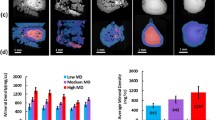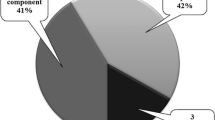Abstract
An extensively updated version of the EQUIL software is described. The former version, designated EQUIL2, is widely used to study urolithiasis and related areas of biomineralization. In this report, we discuss recent enhancements which give EQUIL93 an expanded scope of application. This program has been frequently used in studies of the physicochemical processes underlying stone salt crystallization, especially crystal growth and nucleation, but it has also been employed as an aid for in vivo research and as an evaluator of therapeutic measures. We illustrate several new applications, including some outside the urologic realm, and we discuss how the enhanced software can be helpful in stone risk assessments.
Similar content being viewed by others
References
Ackermann D, Brown C, Dunthorn M, Purich DL, Finlayson B (1989) Use of the computer program EQUIL to estimate pH in model solutions and human urine. Urol Res 17:157
Adair JH (1980) Coagulation of calcium oxalate monohydrate. Dissertation, University of Florida
Bertholf RL, Bertholf MF, Brown CM, Riley WJ (1992) Ionized calcium buffering in the transfused anhepatic patient: ab initio calculations of calcium ion concentrations. Ann Clin Lab Sci 22:40
Bjerrum J, Schwarzenbach G, Sillen LG (1957, 1958) Stability constants of metal-ion complexes, with solubility products of ionic substances. I. Organic ligands; II. Inorganic Ligands. The Chemical Society, London
Brown CM, Purich DL (1991) Strong inference in mechanistic urolithiasis: a tribute to Birdwell Finlayson's biophysical contributions. In: Smith L, Khan S (eds) Proceedings of the Finlayson Colloquium. Am J Kidney Dis 17:451
Brown CM, Purich DL (1992) Physical-chemical processes in kidney stone formation. In: Coe FL, Favus MJ (eds) Disorders of bone and mineral metabolism. Raven Press, New York, p 613
Brown CM, Ackermann DK, Purich DL, Finlayson B (1991) Nuclcation of calcium oxalate monohydrate: use of turbidity measurements and computer-assisted simulations in characterizing early events in crystal formation. J Cryst Growth 108:455
Burns JR, Finlayson B (1980) A proposal for a standard reference artificial urine. Invest Urol 18:167
Christensen JJ, Eatough DJ, Izatt RM (1975) Handbook of metal-ligand heats and related thermodynamics quantities, 2nd edn. Dekker, New York
Christensen JJ, Eatough DJ, Izatt RM (1983) Handbook of metal-ligand heats and related thermodynamic quantities, 3rd edn. Dekker, New York
Curreri PA, Onoda GY, Finlayson B (1978) An electrophoretic study of calcium oxalate monohydrate. J Colloid Interface Sci 69:170
Finlayson B, Miller GH (1969) Urine ion equilibria-a numerical approach demonstrated by application to antistone therapy. Invest Urol 6:428
Finlayson B, Curreri P, Onoda G, Brown C (1984) An analysis of citrate adsorption on whewellite. In: Vahlensieck W, Gasser G (eds) Pathogenese und Klinik der Harnsteine X. Steinkopff, Darmstadt, p 174
Garside J, Brecevic L, Mullin JW (1982) The effect of temperature on the precipitation of calcium oxalate. J Cryst Growth 57:233
Grahame DC (1947) The electrical double layer and the theory of electrocapillarity. Chem Rev 41:441
Hiemenz PC (1977) Principles of colloid and surface chemistry. Dekker, New York
Hogfeldt E (ed) (1982) Stability constants of metal-ion complexes. A. Inorganic ligands; B. Organic ligands. Pergamon, London
Lentner C (ed) (1981) Geigy scientific tables, 11th edn. Ciba-Geigy, West Caldwell, NJ, p 53
Martell AE (ed) (1964) Stability of metal-ion complexes. II. Organic ligands. The Chemical Society, London
Martell AE (ed) (1971) Stability of metal-ion complexes [Suppl 1]. II. Organic including macromolecular ligands. The Chemical Society, London
Martell AE, Smith RM (1974–1982) Critical stability constants, vols 1–6. Plenum Press, New York
National Institutes of Health (1989) Consensus Development Conference on Prevention and Treatment of Kidney Stones. J Urol 141:705
Pak CYC, Skurla C, Harvey J (1985) Graphic display of urinary risk factors for renal stone formation. J Urol 134:867
Robertson WG, Peacock M (1985) Pathogenesis of urolithiasis. In: Schneider H-J (ed) Urolithiasis: etiology-diagnosis. Springer, New York, p 185
Sillen LG (ed) (1964) Stability of metal-ion complexes. I. Inorganic ligands. The Chemical Society, London
Sillen LG (ed) (1971) Stability of metal-ion complexes [Suppl 1]. I. Inorganic ligands. The Chemical Society, London
Verwey EJW, Overbeek JTG (1948) Theory of the stability of lyophobic colloids. Elsevier, New York
Werness PG, Brown CM, Smith LH, Finlayson B (1985) EQUIL2: A BASIC computer program for the calculation of urinary saturation. J Urol 134:1242
Author information
Authors and Affiliations
Rights and permissions
About this article
Cite this article
Brown, C.M., Purich, D.L. & Ackermann, D.K. EQUIL 93: a tool for experimental and clinical urolithiasis. Urol Res 22, 119–126 (1994). https://doi.org/10.1007/BF00311003
Received:
Accepted:
Issue Date:
DOI: https://doi.org/10.1007/BF00311003




